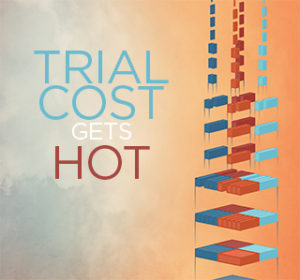We read with interest a recent article (“Research and Development Spending to Bring a Single Cancer Drug to Market and Revenues After Approval”) published in JAMA Internal Medicine by Prasad and Mailankody and wanted to provide our perspective on this important topic.
We at KMR Group have been working with the R&D pharmaceutical industry for over 25 years and have invested significant time helping companies understand how much they are spending to develop products, how they compare to the broader industry, and identifying opportunities for improvement in their organizations.
While the article was helpful for raising crucial questions about pharma R&D, there were serious problems with the methodology, leading the authors to understate the true cost of drug development and exaggerate the return on investment.
One of the most egregious flaws with the method was the sampling of companies and products. The study picked small companies with no prior approvals, that had an extremely novel NME approved, and then extrapolated this data to all of pharma R&D.
Why is this sampling a problem?
The authors claim that because these companies were simultaneously developing several compounds the cost of failure was included. This is misleading. Using their data, 10 companies had 43 drugs in development, of which 12 were approved, a 28% success rate. By setting the criteria to include only companies that were successful, the success rates are skewed.
In terms of success rates, a critical metric for pharma, we have proprietary data that is carefully collected directly from pharma companies. This data is treated consistently across the companies and carefully reviewed to ensure accuracy. Indeed, we recently reported1 that in 2012-16 the overall NME success rate was 6% (i.e., 6% of new drugs entering Preclinical reach approval). This is for all diseases, not just Oncology; Oncology is close to that figure. This is far from the 28% rate in the article. A reliable spending figure must properly account for the cost of failure; the JAMA article fails to adequately account for this.
Second, the focus is on Oncology, where there has been much change over the last decade. The fruits of labor have finally begun to benefit the industry after long frustration, but all the prior work and cost is not accounted for here. We liken this to a present day search for Alzheimer’s drugs. Companies have been investing billions in search for a breakthrough Alzheimer’s treatment, but as of yet have seen minimal return. If a scientific breakthrough happens in the next 5 years and the market expands with novel medicines, it would be misleading to only take the last 5 years of effort when assessing the R&D return.
There are other major issues with the methodology. Despite discounting the cost of failure inappropriately, even for the companies tracked there were significant drug costs missing:
• Licensing/Acquisition costs: Half of the drugs (5 of 10) originated outside the companies. For these drugs, costs prior to this point were excluded.
• Post-approval commitments: At an increasing rate, regulatory agencies are working with pharmaceutical companies to approve drugs but mandate that follow-up trials and programs are run even after the drug is marketed. None of these post-approval commitments are included in the expenses.
• Discovery work: The costs required to bring a drug from the lab to the clinic are not included in the analysis. The authors do try and capture preclinical costs, but designate start of R&D to be 2 years before initial mention in literature. This is not sufficient time to go from target identification to first dose in humans.
• Co-Development: 60% of the drugs had a collaborative agreement with another pharmaceutical company. The authors state that for these drugs, R&D expenditures from both companies were included, but the method is unclear. For example, Iburtinib was co-developed between Pharmacyclics and Johnson & Johnson. It is not clear what figures were added to the Pharmacyclics R&D spending to account for J&J’s portion.
The other main element the article focused on was the revenues after the drugs were approved.
The selection bias of these companies also had a significant effect when looking at sales. Half of the products were acting on novel targets and had expedited development timelines, which not only reduce cycle times and overall spending to bring the drug to market, but inflate the revenues as well. These were novel medicines and so there is no surprise the revenues would be higher when compared to more standard developed drugs.
In addition, to bolster sales companies expend significant sums on marketing, education, and awareness of their products. Without these expenses (which are not captured in the cost calculations) the drugs would not have such high returns.
Finally, while some drugs do generate significant returns, there is no comparison to the alternative therapies or treatments. Novel drugs can be expensive but how do they compare to the other options? It is possible that even expensive drugs are reducing overall healthcare costs.
We are not the only firm to find criticism with their findings. The New York Times shared views of other Industry leaders in response to the article.
We want to end on a question that characterizes the conclusion of the article. Could you develop a cancer drug with $648 million? If so, would it return 10x the investment? It’s possible but we wouldn’t bet on it. To have an accurate sense of the cost of drug development requires access to the most reliable data, careful analysis, and proper method.
1Pharmaceutical Benchmarking Forum 2017 R&D Performance: Success Rates & Cycle Time, KMR Group, June 2017


